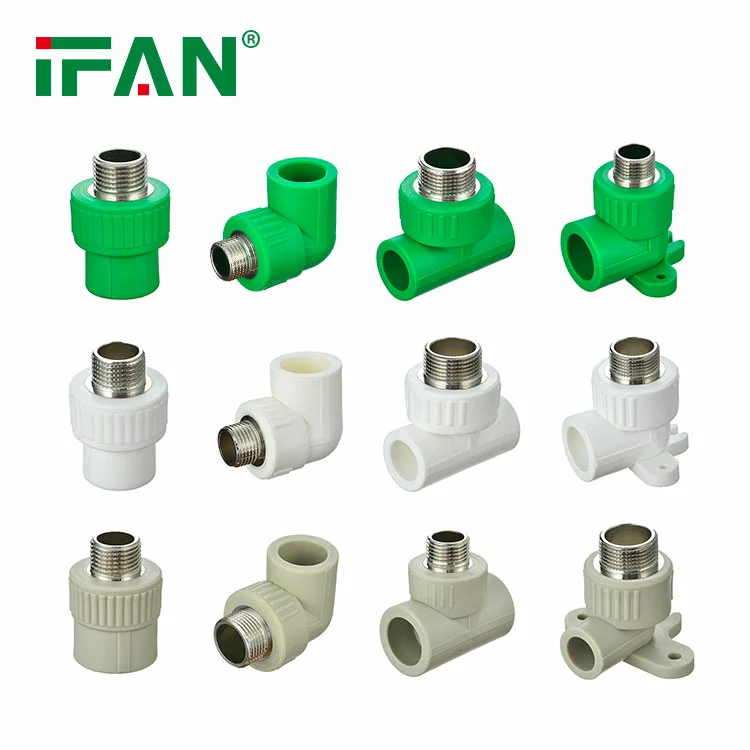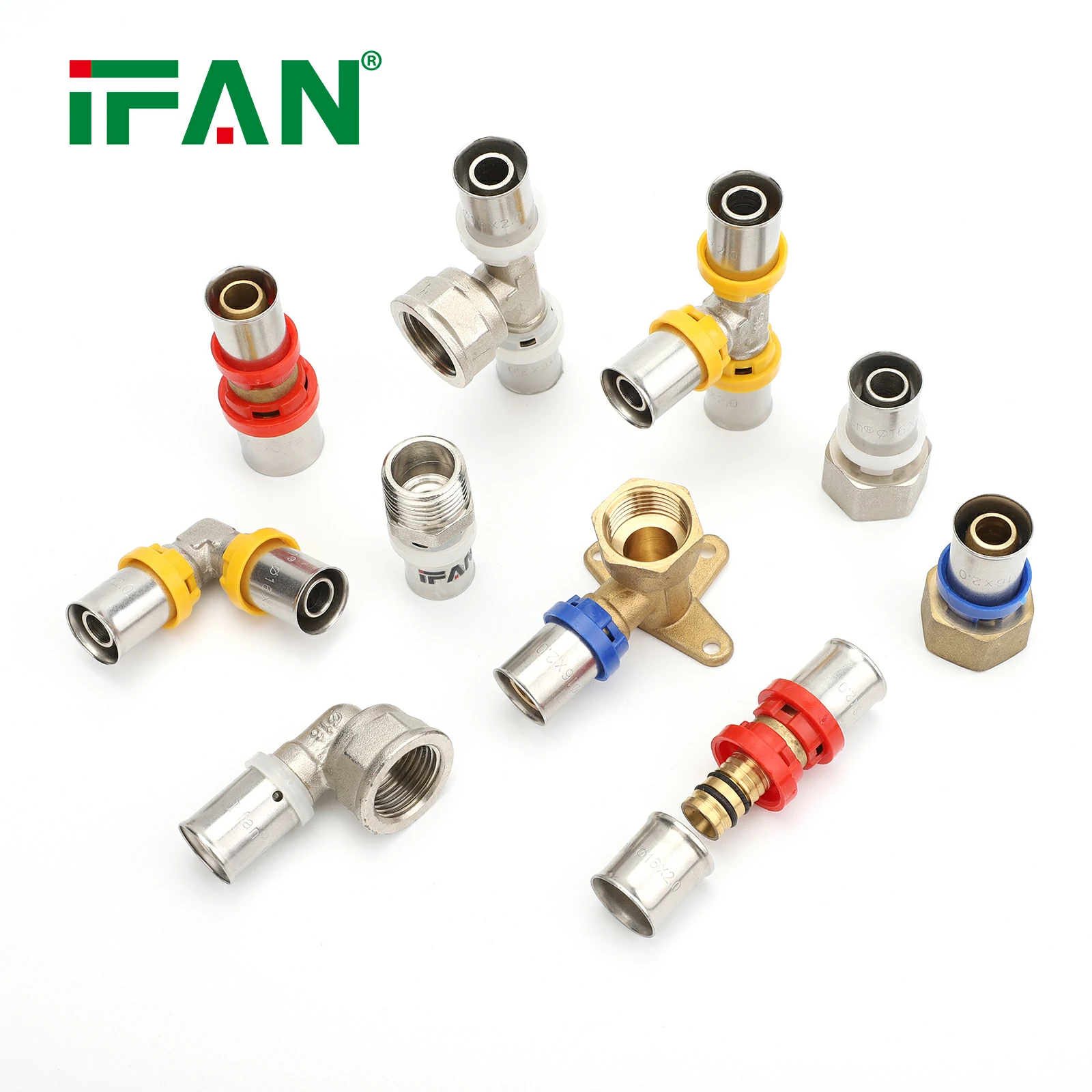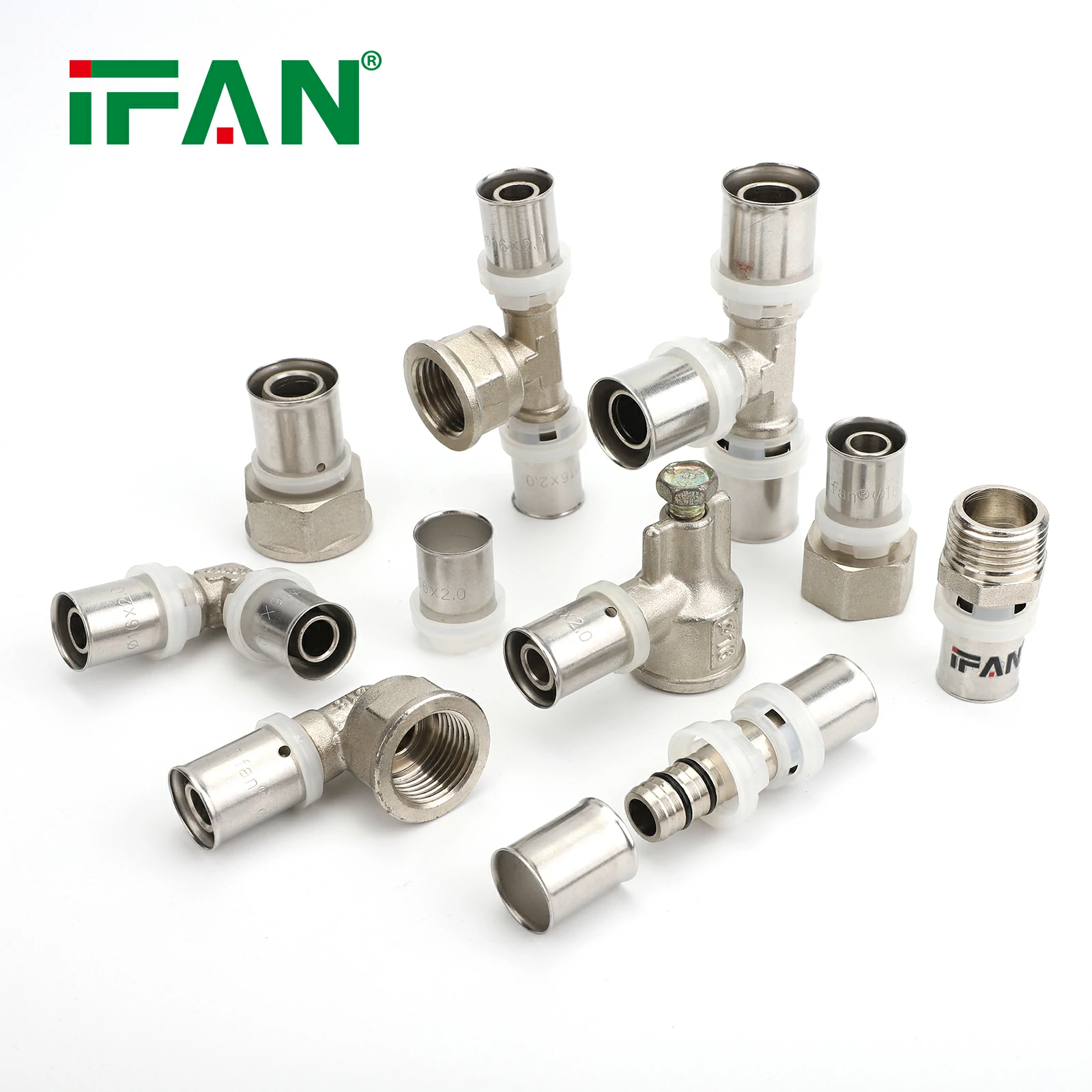IFAN factory 30+ years manufacture experience support color /size customization support free sample.Welcome to consult for catalog and free samples.This is our Facebook Website:www.facebook.com,Click to watch IFAN’s product video.Compared with Tomex products, our IFAN products from quality to price are your best choice, welcome to buy!
PPR fittings, made from Polypropylene Random Copolymer, are rapidly becoming one of the most popular choices for plumbing systems. As sustainable construction practices continue to rise in popularity, PPR fittings are standing out as a reliable, durable, and eco-friendly option for modern plumbing solutions. This article explores how PPR fittings are revolutionizing the world of sustainable plumbing and their numerous benefits for both residential and commercial buildings.
What Are PPR Fittings?
PPR fittings are plumbing components used to connect PPR pipes in a piping system. These fittings are made from Polypropylene Random Copolymer, a plastic material known for its strength, durability, and resistance to corrosion, high temperatures, and chemical reactions. Some common PPR fittings include elbows, tees, couplings, reducers, and adapters, all of which are designed to ensure secure, leak-free connections in water, heating, and industrial systems.
Why PPR Fittings Are Ideal for Sustainable Plumbing
The construction industry is moving toward more sustainable practices, and PPR fittings play a significant role in this shift. The following factors highlight why PPR fittings are a game-changer for sustainable plumbing:
1. Durability and Longevity
One of the key advantages of PPR fittings is their impressive durability. Unlike metal pipes, which are prone to corrosion and rust over time, PPR fittings are resistant to corrosion, scaling, and chemical degradation. This makes them ideal for long-term use in plumbing systems without the need for frequent repairs or replacements. In turn, this significantly reduces waste and the need for additional resources, contributing to sustainability efforts.
In sustainable plumbing systems, longevity is a vital factor. PPR fittings ensure that plumbing systems remain functional and intact for decades, reducing the environmental impact associated with replacing and discarding older, worn-out pipes and fittings.
2. Energy Efficiency
PPR fittings offer excellent thermal insulation, making them ideal for use in hot water systems and underfloor heating systems. The ability of PPR fittings to maintain consistent water temperatures ensures energy efficiency in heating systems, ultimately reducing energy consumption and lowering utility bills.
In sustainable plumbing, energy efficiency is a top priority. PPR fittings help maintain the efficiency of heating and hot water systems, leading to lower energy demands and reduced carbon emissions. This makes PPR fittings an environmentally friendly solution for energy-conscious buildings.

3. Eco-Friendly Material
As more builders and homeowners look to reduce their environmental footprint, PPR fittings stand out as an eco-friendly option. PPR is a recyclable material, meaning that at the end of its life cycle, it can be reused without contributing to the growing waste problem. Additionally, the non-toxic nature of PPR ensures that it does not leach harmful chemicals into the water supply, which is crucial for maintaining water quality and safety.
Furthermore, PPR fittings have a low environmental impact during production. The manufacturing process requires less energy compared to traditional materials like metal, contributing to a more sustainable overall lifecycle.
4. Reduced Carbon Footprint
The carbon footprint of construction materials is an essential factor in determining their sustainability. PPR fittings have a significantly lower carbon footprint compared to traditional plumbing materials like copper or steel. Not only is PPR produced with less energy, but its lightweight nature also reduces transportation energy costs. This helps reduce the overall carbon emissions associated with plumbing installations, further supporting sustainable building practices.
5. Low Maintenance and Cost-Effectiveness
The low maintenance requirements of PPR fittings contribute to their sustainability. PPR fittings do not require frequent repairs, replacements, or special treatments, which means fewer materials are consumed over the lifetime of the plumbing system. This also lowers labor costs and ensures that fewer resources are used in the upkeep of the system.
As PPR fittings are long-lasting and durable, they offer a cost-effective solution for both homeowners and businesses. The initial investment in PPR fittings may be slightly higher than other materials, but their durability and reduced maintenance needs result in long-term savings. These factors make PPR fittings an excellent choice for sustainable plumbing systems that aim to minimize financial and environmental costs.
Applications of PPR Fittings in Sustainable Plumbing
1. Water Supply Systems
In sustainable construction, the focus is on creating efficient, safe, and eco-friendly plumbing systems. PPR fittings are widely used in water supply systems for both residential and commercial buildings. They provide reliable, leak-free connections that ensure a constant flow of potable water without contamination from rust or harmful chemicals.
PPR fittings are also used in rainwater harvesting systems, which are increasingly being integrated into green buildings. The ability of PPR to resist corrosion and its long lifespan makes it ideal for these systems, where water quality and durability are of utmost importance.
2. Heating Systems
PPR fittings are highly suitable for sustainable heating systems, such as underfloor heating and radiator systems. The ability of PPR fittings to withstand high temperatures ensures they are effective in hot water heating systems, which are a popular choice for energy-efficient homes and buildings.
By reducing heat loss, PPR fittings help increase the efficiency of heating systems. This results in lower energy consumption and a more sustainable building, making PPR fittings an excellent choice for energy-conscious homeowners and businesses.
3. Wastewater and Drainage Systems
In addition to water supply systems, PPR fittings are also used in wastewater and drainage systems. Their resistance to corrosion and chemicals makes them ideal for handling wastewater and sewage, ensuring that these systems remain functional without deteriorating over time.
In sustainable plumbing, PPR fittings play a vital role in maintaining the integrity of drainage systems, reducing the need for frequent replacements and minimizing environmental waste. This makes them an excellent choice for eco-friendly drainage solutions in both residential and commercial projects.
4. Industrial Applications
PPR fittings are increasingly being used in industrial applications, particularly in sectors that require the transportation of chemicals, gases, or other aggressive fluids. The material’s resistance to high temperatures and corrosive substances ensures that PPR fittings are durable and reliable in challenging environments, contributing to the sustainability of industrial processes by reducing the need for frequent system overhauls.
Conclusion
PPR fittings are transforming the plumbing industry by offering a sustainable, durable, and eco-friendly alternative to traditional plumbing materials. Their corrosion resistance, energy efficiency, recyclability, and low maintenance make them an ideal choice for modern plumbing systems. By incorporating PPR fittings into construction projects, builders and homeowners can help reduce their environmental impact while ensuring long-lasting, reliable plumbing solutions.
As the construction industry continues to embrace sustainability, PPR fittings are sure to play a crucial role in shaping the future of plumbing. With their environmental benefits, cost-effectiveness, and versatility, PPR fittings are truly changing the game for sustainable plumbing.
Frequently Asked Questions (FAQs)
1. What are PPR fittings made of?
PPR fittings are made of Polypropylene Random Copolymer (PPR), a durable plastic material known for its resistance to corrosion, chemicals, and high temperatures.
2. Are PPR fittings eco-friendly?
Yes, PPR fittings are made from recyclable materials and are non-toxic, making them an environmentally friendly option for plumbing systems.
3. Can PPR fittings be used for hot water systems?
Yes, PPR fittings are designed to withstand high temperatures and are commonly used in hot water systems, including underfloor heating and central heating systems.
4. How long do PPR fittings last?
PPR fittings are known for their durability and long lifespan, often lasting several decades without the need for frequent repairs or replacements.
5. Are PPR fittings cost-effective?
While the initial cost of PPR fittings may be higher than other materials, their long lifespan and low maintenance requirements make them a cost-effective choice in the long term.






